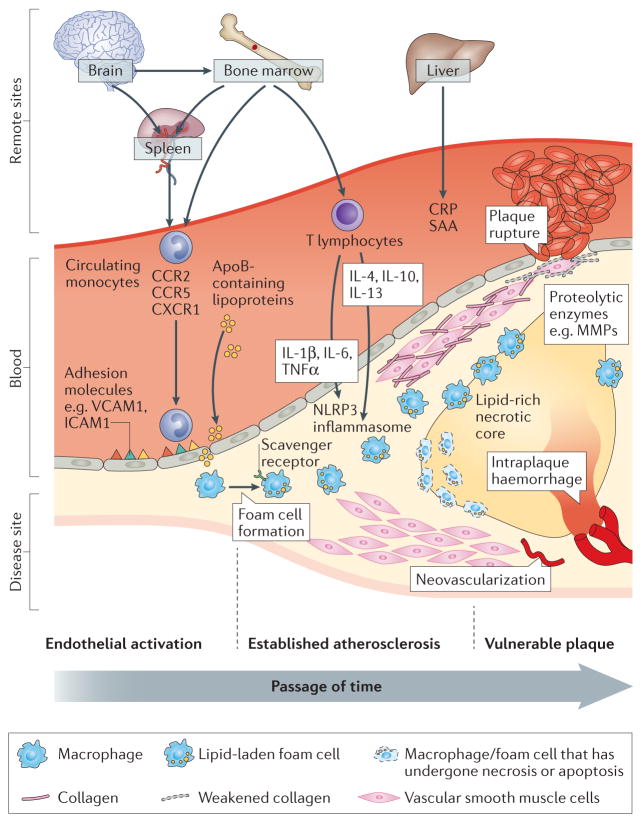Figure 2.
Biological processes central to the pathogenesis of atherosclerosis. Endothelial cells, lymphocytes, smooth muscle cells, monocytes, and macrophages are all involved in the pathogenesis of atherosclerosis from earliest foam cell formation through to development of advanced plaques. Initial activation of the endothelium from disruptions to normal shear stress result and facilitate deposition of lipid in the subendothelial space. Endothelial activation also promotes recruitment of circulating monocytes where they terminally differentiate into macrophage or differentiate and locally proliferate into distinct functional phenotypes. Activated macrophages take up lipid and results in their transformation into macrophage-derived foam cells. As the foam cell population grows within lesions in the arterial wall, the rate of accumulation exceeds the rate of clearance, and eventually the foam cells coalesce into a lipid-rich necrotic core. Abbreviations: VCAM: vascular cell adhesion molecule; ICAM: intercellular cell adhesion molecule; CCR: chemokine-chemokine receptor; CX3CR1: CX3 chemokine receptor; IL: interleukin; TNF: tumour necrosis factor; ApoB: Apoliporotein B; CRP: C reactive protein; SAA: serum amyloid A; MMP: matrix metalloproteinase; NLRP3: NOD-like receptor family pyrin domain containing 3; VSMC: vascular smooth muscle cells.

